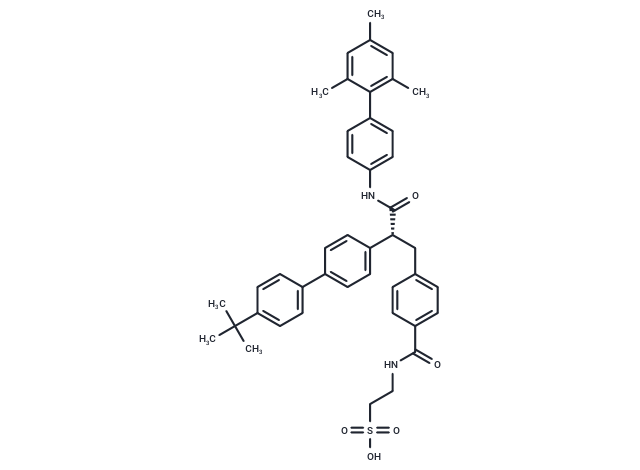Shopping Cart
Remove All Your shopping cart is currently empty
Your shopping cart is currently empty
LGD-6972 is an antagonist of glucagon receptor.

| Pack Size | Price | USA Warehouse | Global Warehouse | Quantity |
|---|---|---|---|---|
| 1 mg | $81 | - | In Stock | |
| 5 mg | $197 | - | In Stock | |
| 10 mg | $289 | - | In Stock | |
| 25 mg | $496 | - | In Stock | |
| 50 mg | $728 | - | In Stock | |
| 100 mg | $987 | - | In Stock | |
| 1 mL x 10 mM (in DMSO) | $297 | - | In Stock |
| Description | LGD-6972 is an antagonist of glucagon receptor. |
| In vivo | LGD-6972 is well tolerated at the doses tested without dose-related or clinically meaningful changes in clinical laboratory parameters. No subject experiences hypoglycaemia.LGD-6972 has linear plasma pharmacokinetics consistent with once daily dosing that is comparable in healthy and T2DM subjects.?Dose-dependent decreases in fasting plasma glucose are observed in all groups with a maximum of 3.15 mM (56.8 mg/dL) on day 14 in T2DM subjects.?LGD-6972 also reduces plasma glucose in the postprandial state.?Dose-dependent increases in fasting plasma glucagon are observed, but glucagon levels decrease and insulin levels increase after an oral glucose load in T2DM subjects. |
| Molecular Weight | 702.9 |
| Formula | C43H46N2O5S |
| Cas No. | 1207989-09-0 |
| Smiles | Cc1cc(C)c(c(C)c1)-c1ccc(NC(=O)[C@H](Cc2ccc(cc2)C(=O)NCCS(O)(=O)=O)c2ccc(cc2)-c2ccc(cc2)C(C)(C)C)cc1 |
| Relative Density. | 1.206 g/cm3 (Predicted) |
| Color | White |
| Appearance | Solid |
| Storage | store at low temperature | Powder: -20°C for 3 years | In solvent: -80°C for 1 year | Shipping with blue ice/Shipping at ambient temperature. | |||||||||||||||||||||||||
| Solubility Information | DMSO: 31 mg/mL (44.1 mM), Sonication is recommended. | |||||||||||||||||||||||||
| In Vivo Formulation | 10% DMSO+40% PEG300+5% Tween 80+45% Saline: 2 mg/mL (2.85 mM), Sonication is recommended. Please add the solvents sequentially, clarifying the solution as much as possible before adding the next one. Dissolve by heating and/or sonication if necessary. Working solution is recommended to be prepared and used immediately. The formulation provided above is for reference purposes only. In vivo formulations may vary and should be modified based on specific experimental conditions. | |||||||||||||||||||||||||
Solution Preparation Table | ||||||||||||||||||||||||||
DMSO
| ||||||||||||||||||||||||||
| Size | Quantity | Unit Price | Amount | Operation |
|---|

Copyright © 2015-2025 TargetMol Chemicals Inc. All Rights Reserved.